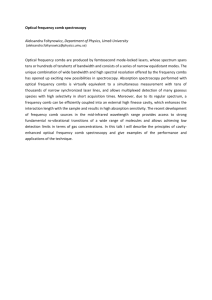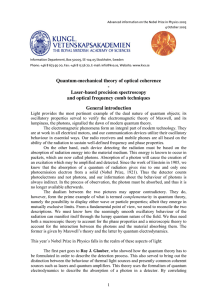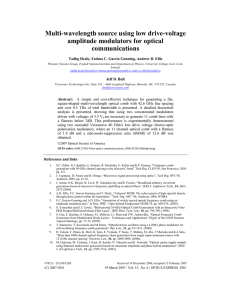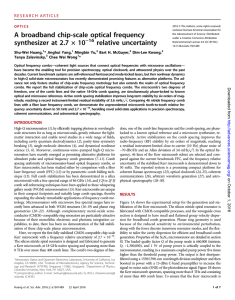Biography
advertisement
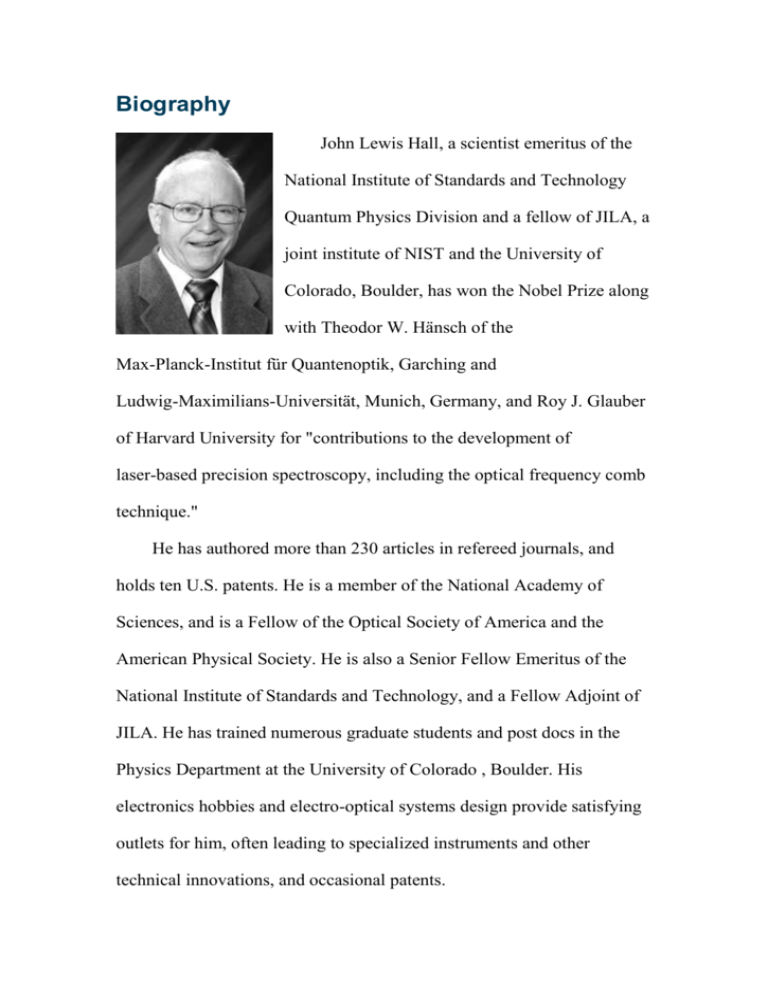
Biography John Lewis Hall, a scientist emeritus of the National Institute of Standards and Technology Quantum Physics Division and a fellow of JILA, a joint institute of NIST and the University of Colorado, Boulder, has won the Nobel Prize along with Theodor W. Hänsch of the Max-Planck-Institut für Quantenoptik, Garching and Ludwig-Maximilians-Universität, Munich, Germany, and Roy J. Glauber of Harvard University for "contributions to the development of laser-based precision spectroscopy, including the optical frequency comb technique." He has authored more than 230 articles in refereed journals, and holds ten U.S. patents. He is a member of the National Academy of Sciences, and is a Fellow of the Optical Society of America and the American Physical Society. He is also a Senior Fellow Emeritus of the National Institute of Standards and Technology, and a Fellow Adjoint of JILA. He has trained numerous graduate students and post docs in the Physics Department at the University of Colorado , Boulder. His electronics hobbies and electro-optical systems design provide satisfying outlets for him, often leading to specialized instruments and other technical innovations, and occasional patents. His JILA work has been recognized through a number of awards from NIST, the Department of Commerce, and the U.S. Office of Personnel Management. He has been awarded many professional, peer-generated honors by the Optical Society and the American Physical Society. In 2004, he received the IEEE Rabi Award and became a member of the French Légion d'Honneur. Hall and Hänsch were awarded half the Nobel Prize for their contributions to the development of laser-based precision spectroscopy, including the optical frequency comb technique. The other half of the Prize was awarded to Glauber for his contribution to the quantum theory of optical coherence. According to the Academy, the important contributions by Hall and Hänsch have made it possible to measure frequencies with an accuracy of 15 digits. Lasers with extremely sharp colors can now be constructed, and with the frequency comb technique precise readings can be made of light of all colors. For example, this technique makes it possible to study the stability of the constants of nature over time and to develop extremely accurate clocks and improved global positioning system (GPS) technology.
